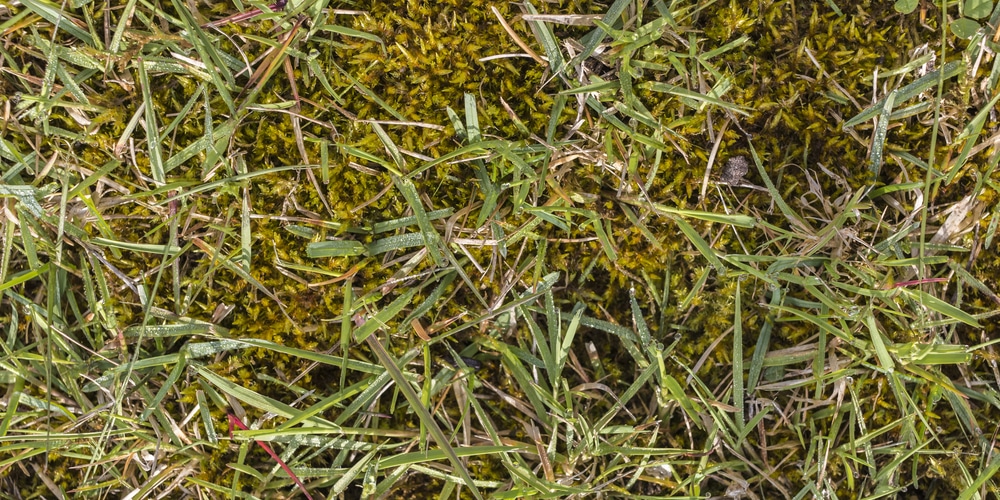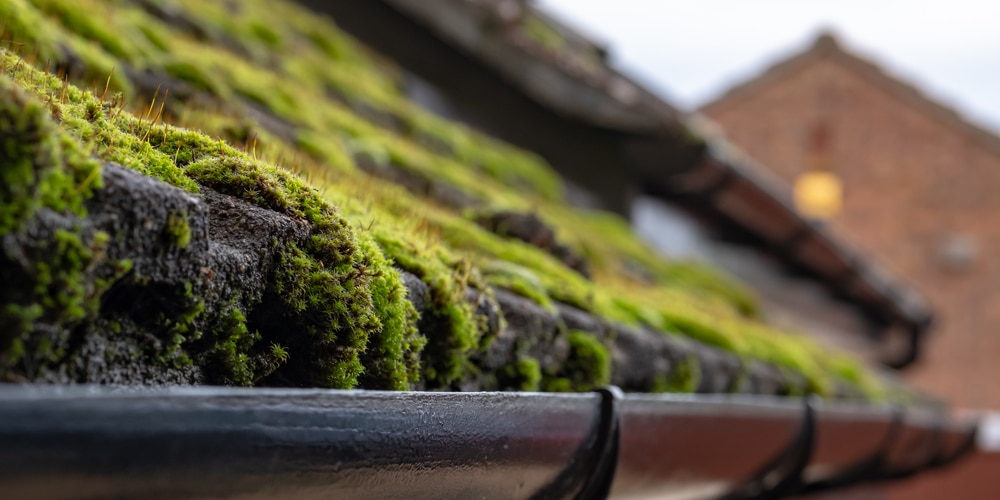The presence of moss in yards can be a nuisance for those who don’t want them there. When dealing with moss, you might wonder, will lime kill moss? Also, how much lime does it take to get rid of moss?
Can You Use Lime to Get Rid of Moss?

Lime, otherwise known as dolomitic lime or hydrated lime, is a gardening compound that’s used to increase soil pH and make it more alkaline. Lime does not directly kill moss, but rather creates an environment where moss is less likely to grow.
That said, you can use lime to kill moss, but it’s not direct and takes time. Keep in mind that you will still have to deal with existing moss plants as you apply lime in your lawn or yard to effectively get rid of them.
Lime tends to increase soil pH, which moss doesn’t like. Moss grows on poor acidic soil and when there’s very little plant competition, which explains why they spring up in bare patches and shaded areas. Moss can be controlled with lime by making it harder for them to thrive in your yard.
It’s worth noting that you should test your lawn or soil before putting lime to see if there’s a need to apply the compound. Otherwise, you’ll be better off doing something else to kill the pesky plants.
How to Get Rid of Moss with Lime
Lime can add valuable nutrients to the soil for your plants or grass, but there is a limit to how much you should put on your lawn to kill moss. It is recommended that you apply anywhere between two to three pounds of lime per 1,000 square feet.
You can follow the manufacturer’s instructions for applying lime, or mix hydrated lime in water before saturating your soil with it.
It’s best to do some work beforehand- use a rake or mow the areas where moss grows to disturb them and break up the patches. Topdress, then apply the lime to the lawn in an even manner.
The best time to use lime for moss control is during the early spring or fall season. Alternatively, you can add lime before the first frost so it will be absorbed by the soil.
Natural Ways to Get Rid of Moss in Your Lawn or Yard
Spray with Dish Soap and Water
One of the best and easiest ways to kill moss is by mixing dish soap and water, then spraying the solution directly on the plant.
Use two ounces of dawn soap or a gentle liquid soap solution and pour it into a gallon of water. You can multiply the formula depending on the size of your yard (add four ounces per two gallons of water, for example) and load it up on a bottle spray.
Locate and spray areas in your lawn where you see moss growing (usually in shaded or constantly wet areas) and apply the solution liberally. Be careful not to spray it on your grass as it will likely affect them as well. After a day or so the moss will dry up and die. Dig up the plants using a small shovel or rake and dispose of them quickly.
Strengthen Your Grass with Fertilizer
Moss doesn’t like to compete with other plants and organisms, which is why they usually appear on bare patches and where there’s no vegetation.
By fertilizing your lawn you make your grass stronger and discourage weeds and unwanted plants such as moss from appearing in your garden.
Observe Correct Watering
Moss tends to grow in a constantly damp or wet environment. Furthermore, they love to sit on shaded areas and spots in your yard that don’t have any plants.
Grass does not need to be watered every day. Water your lawn correctly and allow the soil to dry out now and then to prevent weeds and moss from forming. A good rule of thumb is to bring out the hose once or twice weekly and only your grass starts to look parched or dry.
Seed Grass on Bare Patches
Fill up those brown patches in your turf by seeding grass seeds. This makes your lawn look more uniform and prevents other weeds and moss from invading and making the space their home. Make sure to mix in slow-release fertilizer to support the new grass’ growth.
Aerate Soil and Improve Drainage
Moss thrives in compacted soil and mediums that hold too much water. You can aerate the soil now and then using a rake- disturb the top inch to help loosen the medium and break up moss that’s about to form.
It’s recommended that you improve soil drainage by amending with sand, organic matter, or small stones and gravel. Do this every time you seed a new lawn or when you’re starting new plants.
Related Article: How to Remove Moss From Trees?
